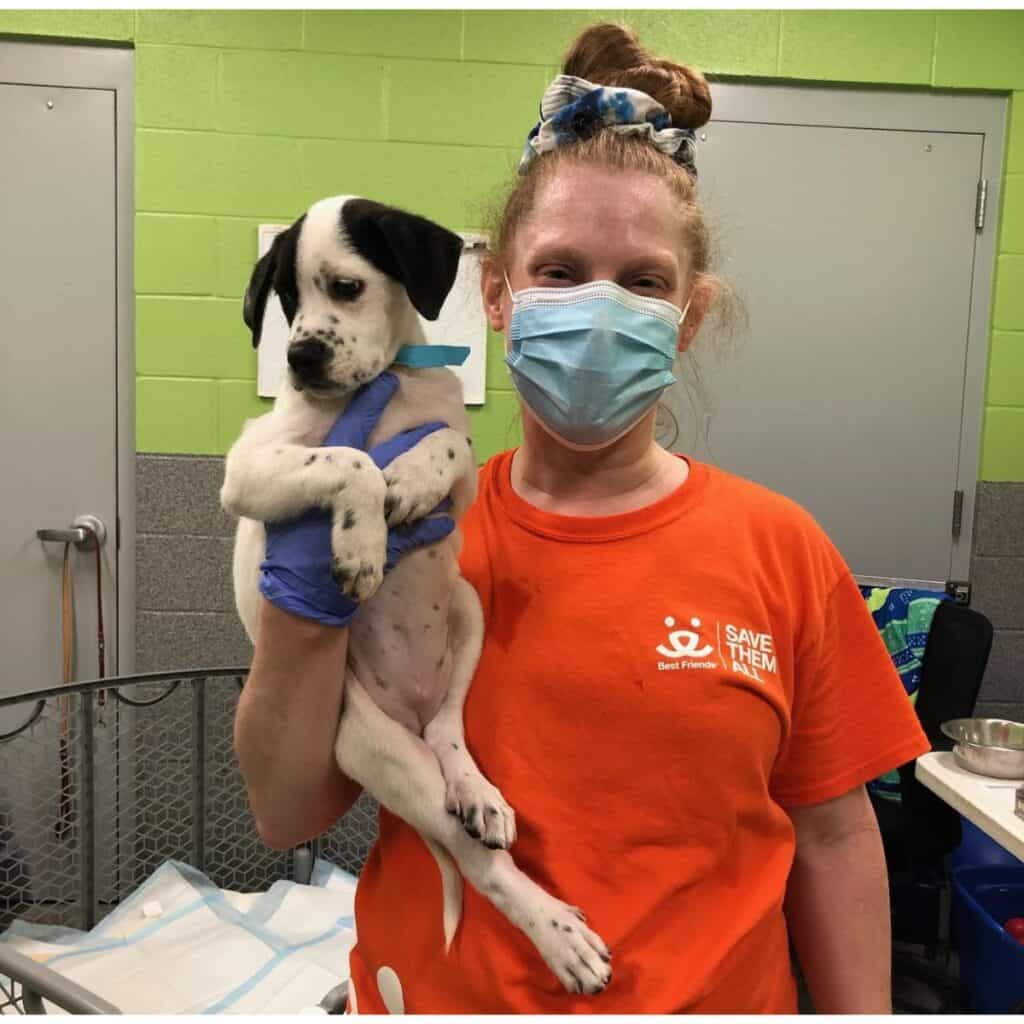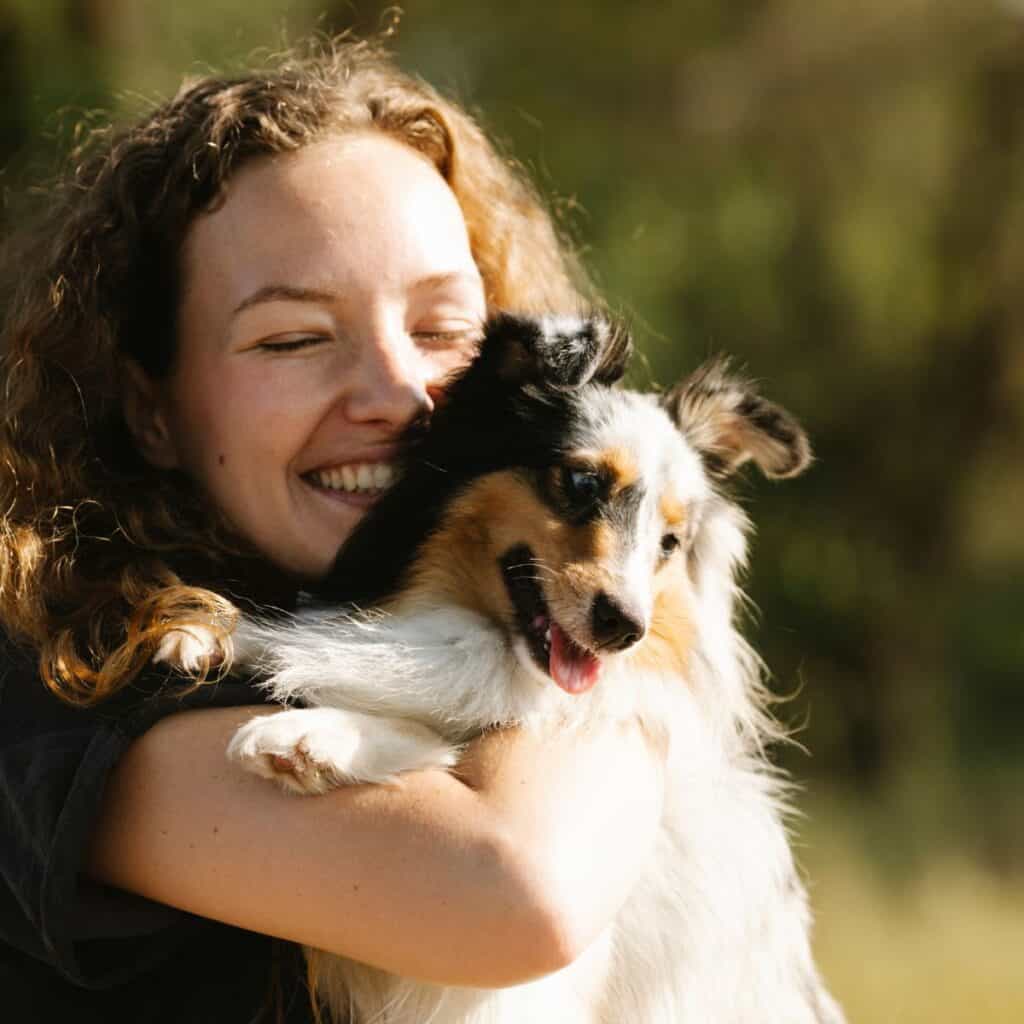If you’re an animal lover looking for a way to give back, volunteering at an animal shelter can be a rewarding experience. Not only will you experience the benefits of volunteering at animal shelter your will be making a difference in the lives of rescue dogs and other pets and you will also gain valuable skills and make new connections.

In this guide, we’ll explore the benefits of volunteering at an animal shelter, what volunteers typically do at animal shelters, and where to find youth programs near you. Whether you’re an experienced animal caretaker or simply looking for a way to get involved, read on to learn how you can make a positive impact and help pets in need.
How to Volunteer at Animal Shelters?
Ready to become a volunteer at an animal shelter? Congratulations so many pets will appreciate your efforts!
The first step to volunteering in an animal shelter is to find a shelter in your area that accepts volunteers. You can find animal shelters near you that accepts volunteers by searching online or using websites such as Petfinder or Adopt-a-Pet to find animal shelters near you. Or look at various options at Best Friends Animal Society that has many locations around the US.
Once you’ve found a shelter that interests you, you’ll need to fill out an application form. The application will typically include questions about your experience with pets, your availability, and your reasons for wanting to volunteer.

Some shelters may also require a background check or a reference from a previous employer or volunteer position. Keep in mind that the application process may take some time, so be patient and persistent. By completing the application process, you’re taking the first step toward making a real difference in the lives of rescue dogs and other pets.
Where Should You Volunteer?
When it comes to volunteering at animal shelters, there are a variety of options available. Some shelters focus specifically on rescuing dogs, training dogs for veterans, saving veteran dogs, some import dogs from other countries like the rescue that saved our Baby Yoda lookalike we featured, and some rescues focus on senior dogs, or dogs that are trained to do important jobs like conservation dogs, while others may work with a variety of pets and animals, including cats, rabbits, and even horses. Here are a few things to consider when deciding where to volunteer:
Location
Choose a shelter that’s convenient for you to get to, whether it’s close to your home, school, or workplace.
Type of animal
If you have a specific interest in dogs, for example, look for a shelter that primarily works with dogs.
Size of shelter
Some shelters may be small and run by volunteers, while others may be larger and have paid staff. Consider whether you’d prefer to work in a more intimate setting or a larger organization.
Volunteer opportunities
Each shelter may offer different volunteer opportunities, such as dog walking, cleaning cages, or administrative work. Choose a shelter that offers volunteer opportunities that match your skills and interests.
Remember, volunteering at an animal shelter is about finding the right fit for you and the shelter. By choosing a shelter that aligns with your values and interests, you’ll be more likely to have a positive and fulfilling experience.
What Are Jobs that Volunteer Do At Animal Shelters?
As a volunteer at an animal shelter, your responsibilities will depend on the shelter’s needs and the opportunities available. While some shelters may ask volunteers to clean and maintain facilities or provide emotional support to animals, others may need assistance with transporting animals or providing specialized care, like the pet pilot we featured in our Celebrating Dad’s Pet Article.
Here are a few examples of what volunteers might do at animal shelters:
Walking and exercising dogs
Many animal shelters rely on volunteers to walk and exercise dogs, helping them to get the exercise and socialization they need. For example, at Best Friends Animal Sanctuary in Kanab, Utah, Mary Oetjens is a one-woman miracle worker for many dogs. She takes sanctuary dogs to their hydrotherapy appointments to help with mobility issues, volunteers with senior dogs weekly at Old Friends, and also takes dogs on outings around town. By doing this, she helps the dogs get the exercise and socialization they need, and also helps them to showcase their personalities to potential adopters.

Cleaning and maintaining facilities
Volunteers may also assist with cleaning and maintaining animal shelter facilities, ensuring that they are clean, safe, and comfortable for the animals. At Best Friends Animal Sanctuary, Mary Oetjens also helps with cleaning facilities and also providing general care to the animals.
Transporting animals
Some animal shelters rely on volunteers to transport animals from high-risk areas to places where demand outstrips supply, like the volunteer transport program at Best Friends Animal Society. Ruth Anne heads up transport of puppies from high-risk Houston shelters to Minnesota, where demand outstrips supply.
There are usually some very special puppy passengers who require extra special care to keep them healthy. These “No Paws On the Ground” puppies are not allowed to walk on pavement to protect them from diseases that could be fatal until they are more mature and fully vaccinated. Thanks to Ruth Anne, who helps manage the program, and our amazing transport stop volunteers, over 300 dogs and puppies passed through Lawrence, KS in 2022 on their way to happy new lives!

Providing specialized care
Certain animals may require extra care, like the “No Paws On the Ground” puppies mentioned earlier. Volunteers, like Ruth Anne Decker, help manage programs that cater to these special animals. Meanwhile, at Best Friends Animal Sanctuary, Mary Oetjens has a special place in her heart for dogs that are stressed at the sanctuary. She will take them for outings and sleepovers at her home to decompress, which allows for their true personalities to emerge. Once she knows the dogs’ true persona, she is able to talk to potential adopters and share how the dogs behave in her home. By doing this, she’s been the gateway for many dogs to find loving homes.
Providing emotional support
Volunteers may also provide emotional support to animals by spending time with them, playing with them, and offering them comfort and affection. This type of support can be particularly important for animals who are anxious or stressed in the shelter environment.

Helping with adoptions
Volunteers, like Mary Oetjens, may also help with adoptions by taking dogs on outings around town and showcasing their personalities to potential adopters. Mary’s efforts have helped many dogs find their forever homes.
Remember, the work you do as a volunteer at an animal shelter can have a profound impact on the lives of animals in need. Whether you’re walking dogs, cleaning facilities, or providing emotional support, you’re making a real difference in the lives of these animals.
What Are the Requirements for Volunteering at Animal Rescues
What are the requirements for volunteering at an animal shelter? While requirements may vary from one shelter to another, there are some common expectations that you should keep in mind.
First and foremost, you must have a passion for animals and be willing to commit your time and energy to helping them. You should also be able to work well with others and follow instructions from shelter staff. Most shelters require volunteers to be at least 18 years old, but some may accept younger volunteers with parental consent or even 12 or older if you are accompanied by an adult..
In addition to age requirements, you may be required to complete an application and attend an orientation or training session before you can start volunteering. Some shelters may also conduct background checks to ensure the safety of animals and other volunteers. These requirements may seem daunting, but they are in place to ensure that volunteers are properly trained and prepared to handle the responsibilities that come with working in an animal shelter.
As an example, the No Paws On the Ground transport program in Kansas City requires volunteers to fill out an application and attend a training session before they can participate. This helps ensure that all volunteers are aware of the specific needs of the puppies in the program and how to keep them safe during transport. Similarly, Best Friends Animal Sanctuary in Kanab, Utah requires volunteers to complete an online orientation and an on-site training session before they can start working with animals.
By meeting the requirements set by animal shelters, you can help ensure that you are prepared to provide the best possible care to animals in need. So, before you start volunteering, make sure to do your research and find out what requirements your local animal shelter may have.
What can you do if you are not able to volunteer?
If you are unable to volunteer at an animal shelter, don’t worry – there are still many ways you can support their mission. One of the most important things you can do is donate to your local animal shelter. Animal shelters rely on donations to provide food, shelter, and medical care to the animals in their care. You can donate money, supplies, or even your time by organizing a fundraiser or donation drive in your community.
Animal shelters also have a constant need for supplies. Consider having a donation drive and donating items like pet food, blankets, towels, and cleaning supplies. Many shelters have wish lists on their websites or social media pages that outline the specific items they need most. By donating these items, you can help ensure that the animals in their care have everything they need to be happy and healthy.
Another way to support animal shelters is by spreading awareness about their work. Share posts on social media, talk to your friends and family about the importance of adopting animals from shelters, and encourage others to volunteer or donate. By increasing awareness about animal shelters, you can help ensure that they have the support they need to continue their life-saving work.
In addition to donations and spreading awareness, you can also support animal shelters by fostering animals in need. Fostering involves taking care of animals in your own home until they can find a permanent home. Fostering not only helps animals in need, but it also helps relieve overcrowding in shelters.
So, if you cannot volunteer at an animal shelter, there are still many ways you can support their mission. Consider donating money or supplies, spreading awareness about their work, or fostering animals in need. By doing so, you can make a real difference in the lives of animals in your community. Remember, every little bit helps, and your support can help ensure that animal shelters have the resources they need to continue their life-saving work.
What Do Animal Shelters Need Most?
Animal shelters are always in need of supplies to care for the animals in their care. While different shelters may have specific needs based on their location and the types of animals they care for, there are some items that are always in high demand.
One of the most important things that animal shelters need is food. This includes both dry and canned food for dogs, cats, and other animals. Shelters also need treats to help train and reward animals, as well as supplements and vitamins to help keep them healthy.
Another essential item that animal shelters need is bedding. This includes blankets, towels, and mats that animals can use to sleep on. These items should be washable and durable, as they need to be cleaned and reused often.
In addition to food and bedding, animal shelters also need cleaning supplies. This includes disinfectants, paper towels, trash bags, and mops to keep the facilities clean and sanitary.
Animal shelters also need medical supplies to help care for sick and injured animals. This includes medications, bandages, and other medical equipment. Many shelters also have veterinary clinics on-site, which means they may need more advanced medical supplies like surgical equipment and X-ray machines.
Finally, animal shelters need volunteers. As we mentioned earlier in this article, volunteers play a critical role in helping animal shelters care for their animals. They help with tasks like feeding, cleaning, socializing, and walking animals, as well as providing administrative support and helping with fundraising efforts.
Animal shelters need a variety of supplies and resources to care for the animals in their care. This includes food, bedding, cleaning supplies, medical supplies, and volunteers. By donating these items or volunteering your time, you can help ensure that animal shelters have the resources they need to continue their life-saving work.
Benefits of Volunteering at Animal Shelters: Why Volunteer at Animal Shelters?
Volunteering at an animal shelter is not only beneficial for the animals in their care but also for the volunteers themselves. There are many reasons why someone may choose to volunteer at an animal shelter, but here are some of the most common benefits:
Giving back to the community
Volunteering at an animal shelter is a great way to give back to the community and make a positive impact on the lives of animals in need.
Learning new skills
Volunteering at an animal shelter provides opportunities to learn new skills such as animal care, handling, and socialization. These skills can be valuable for a career in animal-related fields or even in everyday life.
Building relationships
Volunteering at an animal shelter allows you to build relationships with animals and fellow volunteers. You may even form lasting friendships with people who share your passion for animal welfare.
Improving mental health
Spending time with animals has been shown to have a positive impact on mental health. Volunteering at an animal shelter can reduce stress, anxiety, and depression, and increase feelings of happiness and well-being.
Making a difference
By volunteering at an animal shelter, you are making a direct difference in the lives of animals. You are providing them with the care, attention, and love they need to thrive.
Strengthening communities
Animal shelters play an important role in strengthening communities by providing a safe haven for animals and working to reduce animal overpopulation. By volunteering at an animal shelter, you are contributing to a stronger and more compassionate community.
In conclusion, there are many reasons why someone may choose to volunteer at an animal shelter. From giving back to the community and learning new skills to improving mental health and making a difference, volunteering at an animal shelter is a rewarding and fulfilling experience. So, why volunteer at an animal shelter? Because it’s a chance to make a positive impact on the world around us and on the lives of animals in need.
Rescue Dogs Volunteer FAQs
You can volunteer at animal rescues in many capacities, first select what you want to do from fostering, comfort care, clean up, transport and more, then find a local rescue near you by looking online and then complete an application.
Youth animal rescue opportunities maybe hard to find due to certain age restrictions of 16 years or older, however, you can still help dogs in rescues by having fundraisers and making donations, or fostering pets with your family. There are lots of opportunities to help pets in your community.
Find more dog advice and fun stories in our popular book called Motherpuppin’ Adorable: What to do when your dog is better than everyone else’s the perfect companion for navigating the best life with your dog. Learn more about this loved book.

